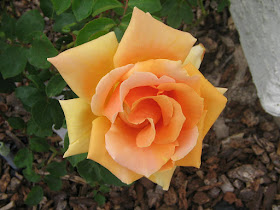Q. When during the year should you start and stop fertilizing
landscape plants and what kind of fertilizer is best for them all? It seems to
me that with acid loving plants, cacti, palms, roses, fruit trees and annual
flowers they might all require different kinds of fertilizers and different
times to apply them.
A. You could go crazy trying to follow all the different
rules when fertilizing for different types of plants. Keep it simple. Let me
give you a few simple rules to follow when applying fertilizers.
If
plants are winter tender, in other words they might get hurt or die when
temperatures dip below freezing, stop fertilizing these plants in July. Our
citrus trees fall into this category.
Lawns,
bedding plants, such as annual flowers, and vegetables should be lightly
fertilized once a month. Lawns that are expected to remain dark green during
the winter should have fertilizer applied around Thanksgiving before freezing
weather.
For
light fertilizer applications, reduce the amount applied to half the rate
recommended on the bag or container. Light applications of fertilizer can be
applied every month and immediately watered in if applied early in the morning.
Get in the habit of applying fertilizers early in the morning or late in the
day.
The most
highly prized landscape plants should be fertilized three or four times during
the year; January/February, April/May and September/October. These include plants
like roses, gardenias, and Jasmine for instance. Again, use half rates when
applying fertilizers.
Most
landscape plants are fertilized only once, just before new growth begins in
late January or early February. This includes all landscape trees including
palm trees.
Which
fertilizer to use? You can get by with 2 or 3 fertilizers in your arsenal. That’s
all. Fertilizers have three numbers separated by hyphens somewhere on their
label. They represent three different plant nutrients; nitrogen, phosphorus and
potassium and in that order.
When
growing plants that are primarily important because of their leaves and stems,
the first number, or nitrogen, should be the highest. The middle number,
phosphorus, should be about one fourth of the value of the first number. The
last number, or potassium should be somewhere in between the first and second
number.
When
growing plants valued for their flowers or fruit, then the second number or
phosphorus becomes critical. It needs to be the highest. When fertilizing these
plants, the second number should be highest while the first and third numbers
lower. Exact numbers are not critical but the ratio of these three, or their
proportions contained in the fertilizer, is more important
To be
healthy, plants need more nutrients than supplied by only these three numbers.
But these three numbers represent nutrients needed in massive amounts by
plants. The other important nutrients are supplied by the soil. For this
reason, I frequently mention the application of compost. A compost application,
once a year to landscape plants, would be extremely beneficial.









